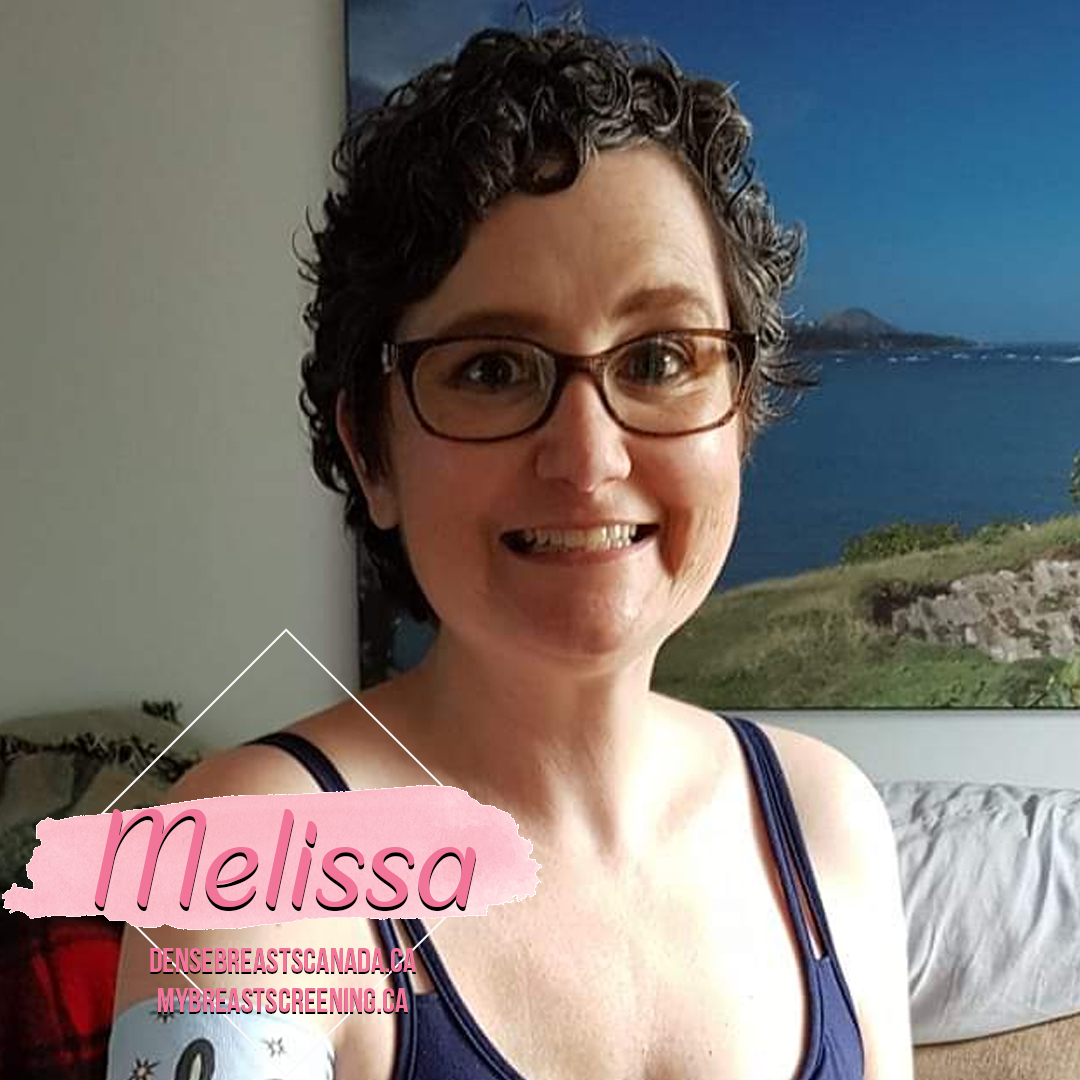Melissa

Sometimes during that time of the month I had irritated, burny nipples (which isn’t overly uncommon) but I started noticing that the right nipple stayed irritated longer than the left, and that the skin on my nipple was sometimes flaky. I figured it was just maybe an allergy to something. I went to my family doctor for a regular appointment to refill some meds, and as she packed up to leave the room, she asked me if there was anything else.
Quelque chose dans mon cerveau me tracassait, et j'ai finalement pensé "oh pourquoi pas" et même si je me sentais ridicule, je lui ai parlé de mon mamelon. Elle a dit "Puisque tu es déjà ici - faisons un examen des seins." Elle m'a examinée très attentivement et j'ai vu un regard bizarre sur son visage. Elle a dit qu'elle pensait sentir quelque chose dans mon sein.
She scheduled appts for me for a mammogram and ultrasound just to make sure there was “nothing sinister going on.” I was 39 with no family history so I saw no cause for concern. I had the mammo and ultrasound – the mammo was 100% clear. The ultrasound picked up a small “suspicious” mass and I was called back in for a core biopsy. On Nov 30, 2018 at age 39, I was diagnosed with stage 1 IDC. – one small tumour 1.6 cm in size. I opted for a mastectomy because my primary concern was getting the cancer out of me, and it was done 3 weeks later – Dec 21, 2018. (Merry Christmas to meeee! ) My pathology came back 2.5 weeks later (holiday delays) and it was determined that I actually had 3 multi-focal tumours (3.8cm, 1.6cm and 0.88cm) – the largest of which was directly behind my nipple which was what was causing the skin irritation. I also had 6 lymph nodes removed and 3 were positive. Stage T2N1 (2B). I was referred to oncology.
At my first appointment at the oncologist, I sat with the nurse first, and immediately burst into tears and the first thing I said was, “how in the hell does a mammo miss THREE friggin’ tumours?!” She looked at me, make a small laugh sound, and said “Yup.” Because they KNOW. They KNOW full and well within the medical community that mammos are often not effective when it comes to dense breasts. I feel extremely lucky that my GP sent me for the ultrasound in conjunction with the mammo – otherwise I have no doubt my situation would have been a lot more dire. As it was, I did 8 rounds (16 weeks) of dose-dense chemo, went back in for a full lymph node dissection (9 more were removed – 2 were still positive) then did 25 rounds of radiation and had an oophorectomy in the fall of 2021. (My cancer was 100% ER+). I’m on an AI (Exemestane) and have started Zometa infusions for my bones.
Le comble, c'est que lorsque j'ai terminé les traitements actifs, mon oncologue a essayé de me renvoyer UNIQUEMENT aux mammographies - pas d'autre surveillance. Je lui ai dit qu'il n'y avait aucune chance ! Pourquoi ferais-je confiance à la mammographies comme seule surveillance, alors qu'elle n’a absolument rien montré la première fois?! Alors maintenant, j'alterne les mammographies avec les IRM tous les six mois, ce qui me convient.
Aujourd'hui, j'ai beaucoup de chance d'être une licorne heureuse et en bonne santé, mais cela me met en colère que les mammographies soient toujours présentées comme une méthode de détection du cancer "pour toutes", alors qu'en fait ce n'est pas le cas. Mieux que rien ? Bien sûr. Mais pour les femmes plus jeunes (qui ont probablement des seins denses) et toutes les femmes avec des seins denses, il devrait être obligatoire que toutes les mammographies soient effectuées en conjonction avec un autre test - que ce soit une échographie ou autre chose.
Je vous envoie beaucoup d'amour et de gros câlins de licorne à vous toutes, charmantes dames !
